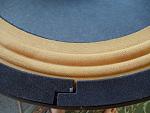Oh, for Heaven's sake...
Just got the FX-888 soldering station I bought on ebay.
It does not power up.
Do you know why it doesn't power up?
So glad you asked...
It does not power up because - pause for effect - the fuse board that fits on the power transformer is inserted
the wrong way round. That's right, the full "rotated 180 degrees" deal.
Fortunately I have another soldering iron. You know, so I can fix my soldering iron...
*****
I would just return it, but the shipping would cost me half again what I paid for it. Perhaps ebay will refund me anyway. We'll see.
I think I know what happened:
The people selling these are modding them by changing the voltage and power cord. The soldering stations are officially bound for the Chinese domestic market, 220 VAC. The box, when it came, had "110V" hand-written on it, though the instructions...













